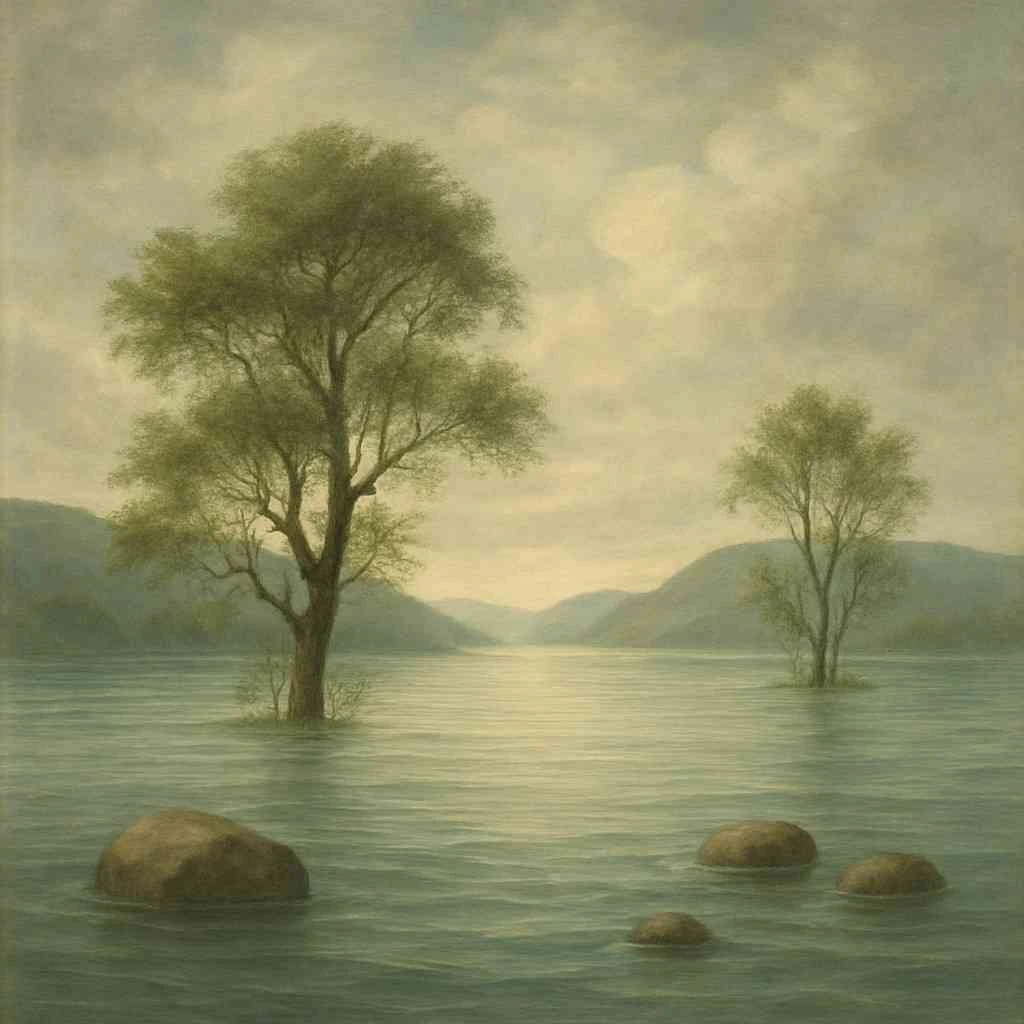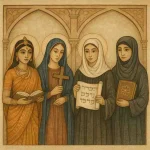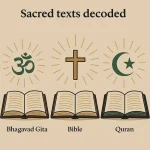The Story of the Great Flood in World Religions
Flood stories appear in cultures across the world, from the ancient Middle East to India, China, Africa, and the Americas. Although separated by geography and time, these narratives share striking similarities. They speak about divine warning, human behavior, destruction, renewal, and the rebirth of civilization. The Great Flood myth is one of the most universal stories in human history, raising important questions: Why do so many cultures share this idea? What message were ancient people trying to preserve? Exploring flood stories across religions reveals not only historical curiosity but also profound moral and spiritual insights.
1. The Biblical Flood — Noah’s Ark
One of the most well-known versions comes from the Bible. According to the Book of Genesis, humanity had fallen into corruption and violence. In response, God decides to cleanse the world through a great flood. Noah, described as righteous, is instructed to build an ark and take his family along with pairs of every animal.
The rain lasts for forty days, submerging the earth. When the waters recede, the ark rests on Mount Ararat. A rainbow appears as a divine promise that such destruction will never be repeated. The story underscores themes of obedience, faith, renewal, and moral responsibility. It presents the flood not merely as punishment, but as a new beginning for humanity.
2. The Quranic Version — Nuh and His People
Islam shares a similar but distinct account. The Quran narrates the story of Prophet Nuh (Noah), who warns his people to turn back from wrongdoing. Unlike the Biblical version, the Quran emphasizes the long years Nuh spent preaching, his patience, and the stubbornness of his people.
Only those who believed in him boarded the ark. The floodwaters rose not only from the sky but also from the earth. When the punishment descended, Nuh’s own son is among those who refuse to board, highlighting a powerful message: faith is a personal choice, not something inherited.
The Quranic flood story is a reminder of accountability, humility before God, and the consequences of ignoring moral guidance.
3. Hindu Traditions — Manu and the Matsya Avatar
In Hindu traditions, the Great Flood appears through the tale of Manu, humanity’s earliest lawgiver. The story begins with a small fish seeking Manu’s protection. When Manu helps the fish, it reveals its true identity—Lord Vishnu, who has come to warn him of an impending flood.
Vishnu instructs Manu to build a boat and gather sages, seeds, and animals to preserve life. When the deluge begins, Vishnu in the form of Matsya, the giant fish, pulls the boat to safety. After the flood recedes, Manu performs rituals that lead to the birth of a new human race.
This version places strong emphasis on virtue, protection of life, and the cyclical nature of creation in Hindu cosmology.
4. Mesopotamian Legends — Utnapishtim and Atrahasis
Long before the Bible, the ancient Mesopotamians recorded flood stories in the Epic of Gilgamesh and the Atrahasis Epic. In these tales, the gods decide to send a flood because humanity has become too numerous or noisy.
A hero—Utnapishtim or Atrahasis—is warned by a god and told to build a large boat. He survives the flood along with his family and animals. Afterward, the gods regret the destruction and grant the hero immortality.
These stories reveal early human attempts to explain natural disasters and understand divine-human relationships.
5. China’s Great Flood — Yu the Great
In Chinese mythology, the Great Flood is a story of perseverance rather than destruction. Massive floods threaten the land, and the hero Yu works tirelessly for years to control the waters, digging channels and guiding rivers.
Unlike other traditions, the flood is not sent by gods as punishment. Instead, it is a natural challenge overcome through wisdom, hard work, and leadership. Yu eventually becomes the founder of the Xia dynasty, symbolizing the birth of organized civilization.
6. Indigenous and Global Flood Myths
Flood stories also appear in many indigenous traditions:
Native American tribes speak of heroes who survive floods by climbing mountains or floating in canoes.
In Africa, several tribes tell of great rains sent to restore balance when humans become greedy.
Australian Aboriginal stories describe floods caused by serpent spirits reshaping the earth.
Mesoamerican myths link floods with cycles of creation and destruction.
The widespread presence of flood myths suggests ancient peoples experienced catastrophic floods or used them as symbols of moral cleansing and cosmic renewal.
7. What Do These Stories Truly Mean?
Beyond cultural differences, Great Flood stories share core themes:
Human actions affect the world.
Warning signs should not be ignored.
Destruction can lead to renewal.
Faith, courage, or wisdom can save humanity.
These myths may not be literal records of one historical flood. Instead, they reflect collective memory, environmental experiences, and philosophical insights.
Floods symbolize the overwhelming forces of nature and the fragility of human life. They warn against moral decay, highlight the need for harmony, and remind societies to preserve what matters most—life, virtue, and community.
A Universal Story of Renewal
The Great Flood appears in world religions because it speaks a universal language. Whether through Noah, Nuh, Manu, Utnapishtim, or Yu, humanity learns the same lesson: when destruction comes, survival depends not merely on strength, but on righteousness, humility, and wisdom.
These stories, even when mythic, carry powerful messages for the modern world—respect nature, value morality, and never underestimate the power of a fresh beginning.
~Religion World Bureau









